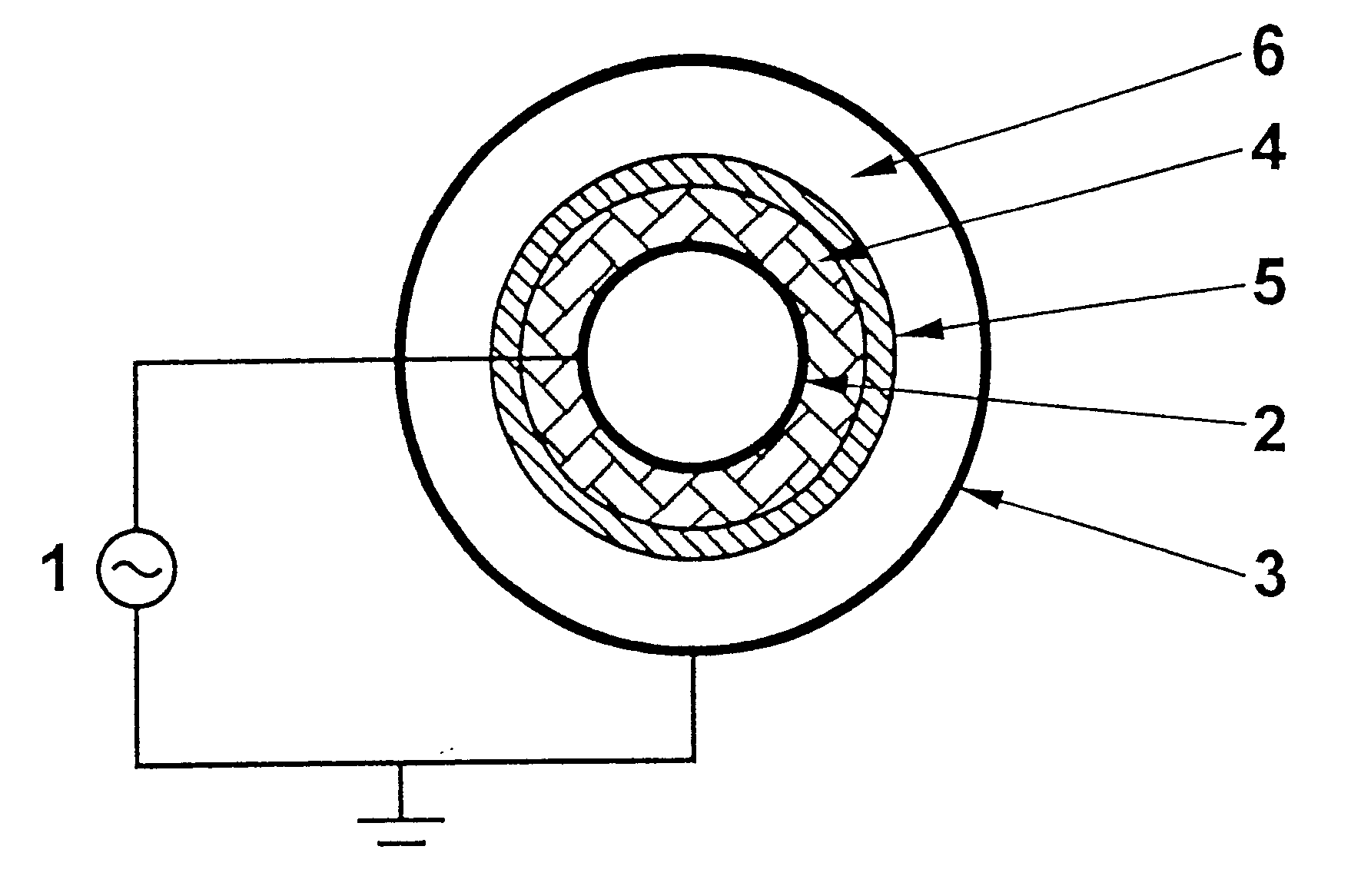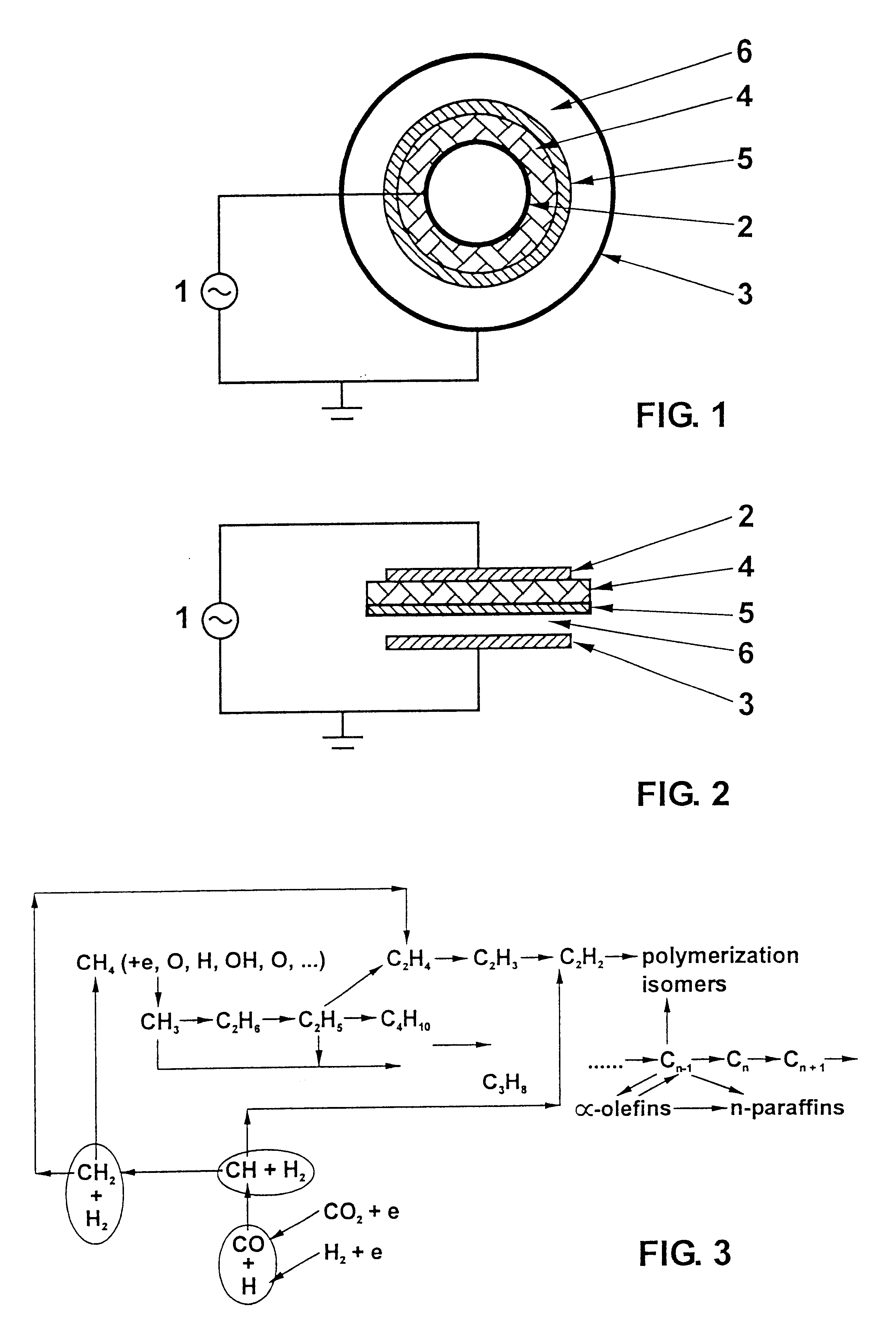Fuel synthesis
- Summary
- Abstract
- Description
- Claims
- Application Information
AI Technical Summary
Benefits of technology
Problems solved by technology
Method used
Image
Examples
example 2
A gas mixture containing 80% methane and 20% carbon dioxide is passing through the gap between the electrodes with the catalyst layer. The flow rate is 0.5 NI / min. The catalyst used is 13X zeolite. An alternating voltage of about 10 kV with a frequency of about 30 kHz is applied to the electrodes. A dielectric barrier discharge is thus initiated. The operating temperature is maintained at about 150.degree. C. and the operating pressure is about 1 bar. The product essentially consists of liquid fuel (C5 to C11), syngas (CO / H2) and light gaseous hydrocarbons (C2 and C3). The liquid fuel product, which is rich in branched hydrocarbons, is collected in a condenser. Similar conversions and selectivities as reported for Example 1 are found.
example 3
The feed gases, i.e. a mixture containing 66.7% methane and 33.3% carbon dioxide, were introduced into the system flowing downstream through the reactor. The flow rate is 150 ml / min. The catalyst used is 13X zeolite. An alternating voltage of about 10 kV with a frequency of about 30 kHz is applied to the electrodes. A dielectric barrier discharge is thus initiated. The operating temperature is maintained at about 150.degree. C. and the operating pressure is about 25 kPa. Under such conditions, methane conversion is 39.5% and carbon dioxide conversion is 33.8%. The selectivities for the products are:
The success in the research and development of a feasible utilization of greenhouse gases, in particular methane and carbon dioxide, which led to the present invention signify the attainment of two important objectives: First, slowing down a build-up of greenhouse gases in the atmosphere and, second, better carbon resource utilization. An extra advantage of such an utilization of these ma...
PUM
| Property | Measurement | Unit |
|---|---|---|
| Thickness | aaaaa | aaaaa |
| Thickness | aaaaa | aaaaa |
| Pressure | aaaaa | aaaaa |
Abstract
Description
Claims
Application Information
 Login to View More
Login to View More - R&D
- Intellectual Property
- Life Sciences
- Materials
- Tech Scout
- Unparalleled Data Quality
- Higher Quality Content
- 60% Fewer Hallucinations
Browse by: Latest US Patents, China's latest patents, Technical Efficacy Thesaurus, Application Domain, Technology Topic, Popular Technical Reports.
© 2025 PatSnap. All rights reserved.Legal|Privacy policy|Modern Slavery Act Transparency Statement|Sitemap|About US| Contact US: help@patsnap.com


